First Nations students rocket to success
A materials-heavy challenge leads to a grand prize win
By: Theresa Gabrielli
Images and video courtesy of: Colin Marquis and Grace Pardini
Top video caption: The UW FNL team's rocket launches into the overcast sky above Wisconsin.
Conditions weren’t ideal in Kansasville, Wisconsin, the day of the launch.
“We were in a race against the clock with the weather. There were concerns that if we were not among the first to launch, we might not get the chance to see our rocket fly due to the incoming rain,” said Colin Marquis, a second-year Ph.D. student in materials science and engineering (MSE).
Getting there
This was the third year that the American Indian Science & Engineering Society (AISES) collegiate chapter at the University of Washington (UW) participated in First Nations Launch (FNL), an annual rocketry competition for students who are connected to Native American tribes.
The UW FNL team had spent the full winter and spring quarters preparing for launch. This year’s Mars Engineering Challenge, the most advanced competition category, was geared towards materials science. Teams needed to fabricate rocket parts from scratch that were similar in size but lighter and stronger than parts from a standard rocket kit. Marquis served as the graduate mentor for the team, especially in the materials selection process.
“Since many of the students in our group were unfamiliar with composite layups, [MSE research scientist] Alex Gray and I served as mentors to the students teaching them about composite properties and fabrication techniques,” Marquis said. “That meant spending a lot of time in the MSE composites shop building rocket airframe components such as a body tube and fins!”
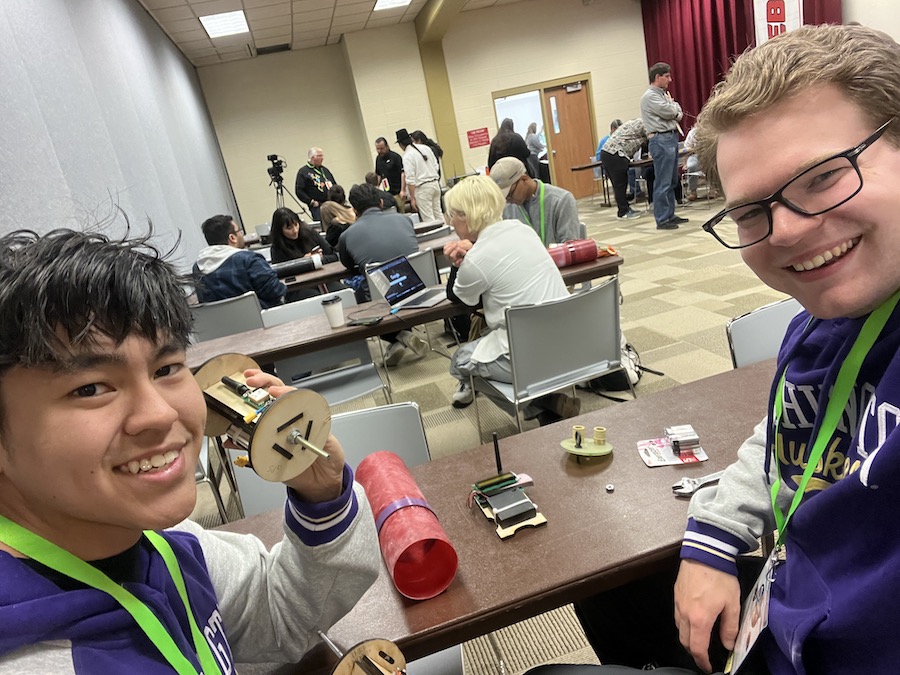
Kiyoshi Oshiro (left) and Colin Marquis (right) making some last-minute adjustments on the rocket's wiring.
Nine students representing several STEM departments across the UW comprised the team, each bringing their own field’s unique skill sets.
“My role was to focus on propulsion and electronics, which included launch simulations and soldering circuit boards,” said Kiyoshi Oshiro, a rising junior in electrical and computer engineering. “I joined the team because what’s cooler than launching rockets?”
The road to the competition was not without its challenges. Ordering supplies for their build took longer than anticipated, with many vendors still experiencing post-pandemic shortages. Coordinating schedules among nine active and busy students made getting everyone together in the lab difficult. The time shortage meant the team had no opportunity to run a test launch prior to stepping onto the competition field. Four students made the trip to Wisconsin and had to assemble the final rocket design at the launch site.
“[There were] lots of late nights in the last week, but also plenty of lab work and report writing throughout the process,” said Grace Pardini, a rising junior in aerospace and aeronautical engineering. “Having the support of all my teammates was an absolute gamechanger.”
Making connections
Providing mentors and opportunities for growth and networking is one of the key features of the FNL competition. While there are many student rocketry competitions under the NASA Artemis Student Challenges program, FNL is designed specifically for students attending a Tribal College or University, a Native American-Serving Nontribal Institution, or who are members of an active AISES collegiate chapter. Teams are encouraged, though not required, to be comprised of primarily Indigenous students.
We saw an awesome combination of culture and creativity.”
Diverse perspectives promote better innovation, which creates better engineers. At the UW, FNL and AISES work in conjunction to bolster Indigenous representation in STEM. FNL provides the hands-on experience, and AISES provides a supportive network of STEM students and professionals who identify as American Indian, Alaska Native, First Nations, Native Hawaiians, and Pacific Islanders. Ideally, students leave the competition with a better idea of the many career options available to them, and a network of real-world contacts in their desired field who share their background.
“[FNL] seemed to be something that could, at its core, represent everything that I strive to be: someone who is connected with my Indigenous roots, and one who very much enjoys all things related to outer space and rocketry,” said Pardini. “I saw more people [at the competition] than I ever expected and met so many friends. I even saw people who were also Alaskan Native.”
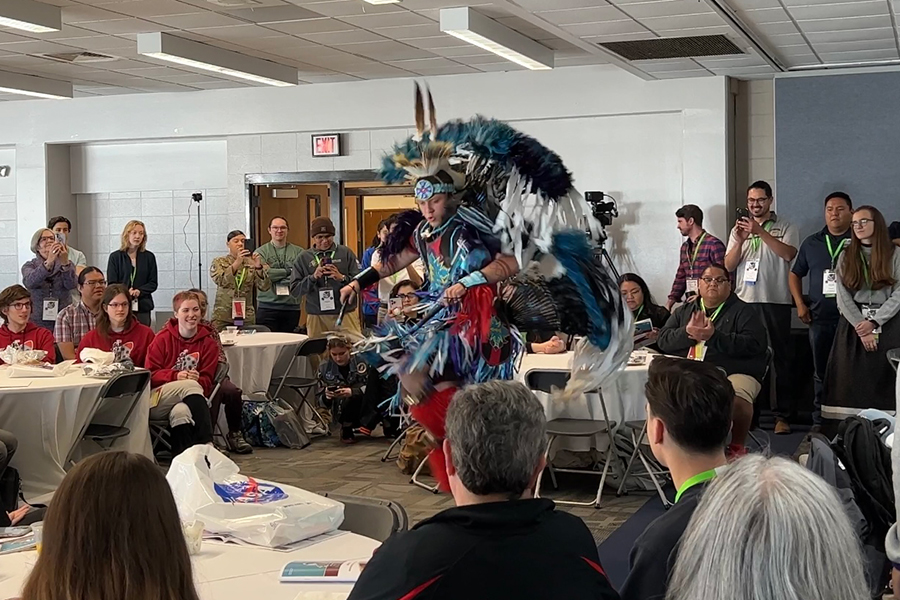
Several students came to the competition with full Powwow regalia in celebration of their heritage.
Competition weekend is not only an academic exercise, but an opportunity for students to embrace and celebrate their heritage. This year, some students came to the competition with full Powwow regalia, and FNL organizers arranged a demonstration of a traditional Stealing Partners dance. “We saw an awesome combination of culture and creativity,” said Marquis. “It was a very meaningful experience to be able to speak with other students from the Potawatomi Nation and hear their stories. I gained a new appreciation for the deep culture of my tribe.”
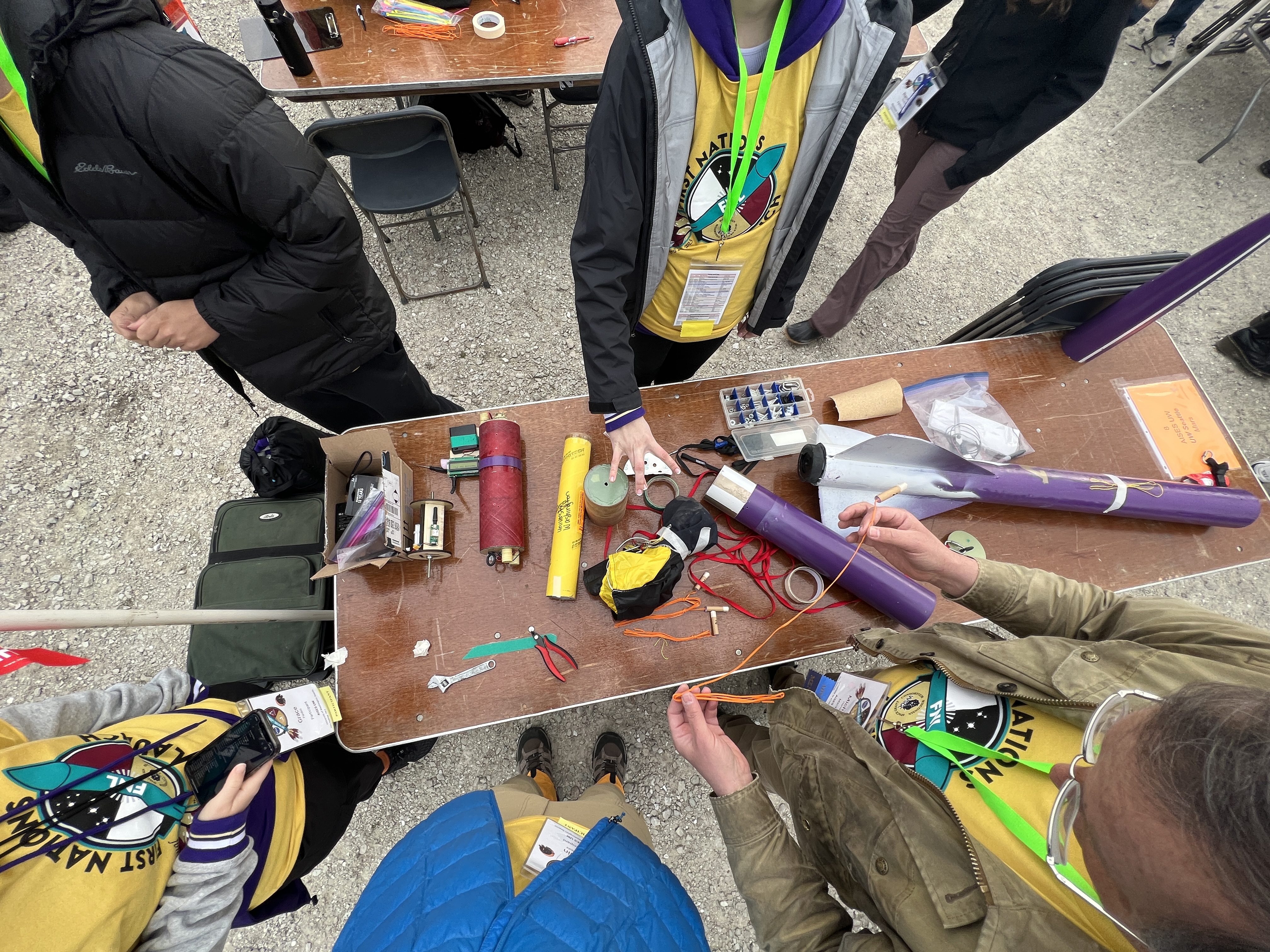
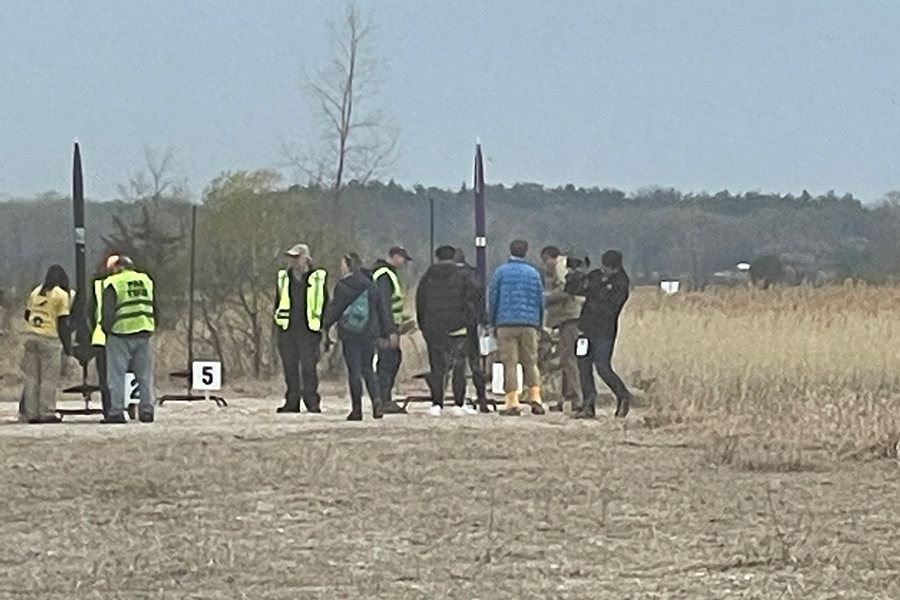
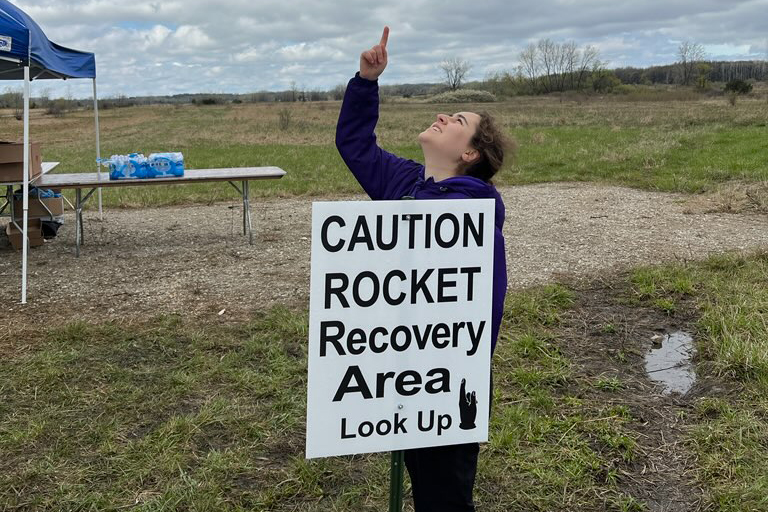
Left: The UW FNL team assembles their competition rocket at the launch site. Top right: The team readies their rocket on the launch pad. Bottom right: Grace Pardini watches for falling rockets.
The launch
The UW FNL team was nervous upon arrival in Wisconsin. Their rocket’s nose cone was having some last-minute tooling failures, and they only had two more nights to find a fix before launch.
“Seeing everyone else's rocket got me thinking about our rocket and how to make it the best it could be. The competitive side of me really took over as I hate losing,” said Oshiro. “I had to learn how to trust myself and my judgment to find solutions to problems.”
The weather on launch day was windy and threatening to rain. The team set up their rocket at the launch site in the Richard Bong State Recreation Area, praying that the rain would hold off just a few more minutes. While they had fixed their nose cone and managed to get a completed rocket ready the night before, there were still any number of other things that could go wrong. They got the all-clear to launch, and waited.
“There were a few seconds where our rocket sat there after launching where I was terrified that it wouldn’t,” said Pardini. “Contrary to my worries, our rocket launched without issue and here we are!”
The UW FNL team took first place in their category, which includes a grand prize VIP tour of the Kennedy Space Center in August. They also received the Spirit Award by a vote of the other FNL teams, which is awarded to the team that shows the most interactive spirit, helpfulness and cooperation.
“The moment our rocket parachutes deployed, we knew we had completed a successful flight,” said Marquis. “A lot of work hours and energy had gone into making this rocket a reality and it was fantastic to see it fly!”
Originally published July 6, 2023